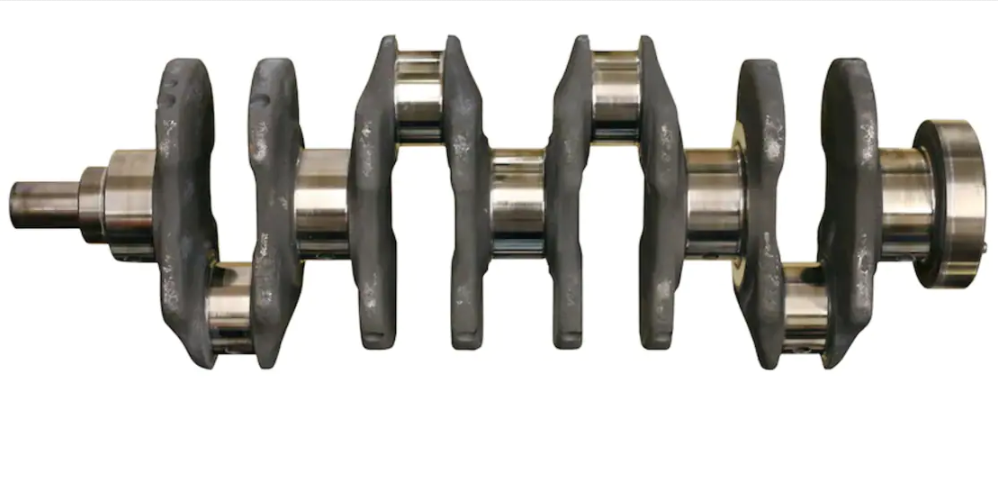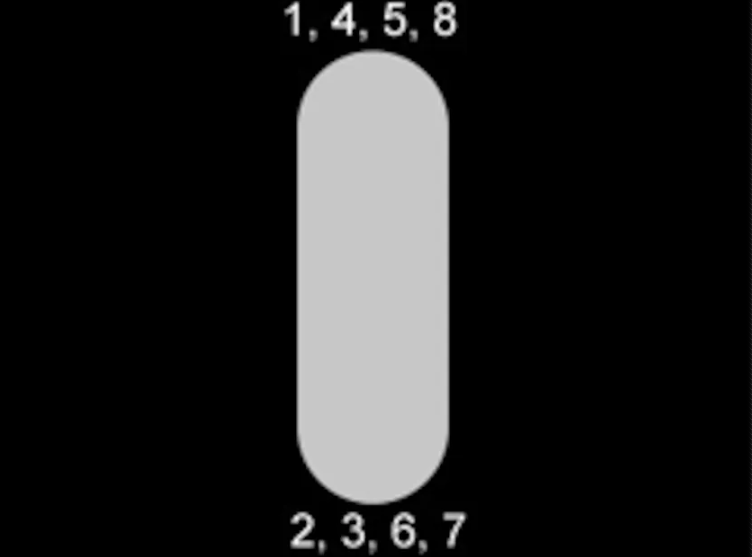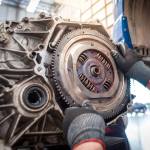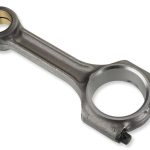What Is A Flat Plane Crankshaft?
In V-8 and V-12 engines, flat-plane cranks used to be fairly rare and only seen in uber-expensive super- and hypercars. They’re the reason you can always tell a Ferrari is ready to crest the hill on a track day. Just like the name states, a flat-plane crank has all of its crank pins in a single, flat plane. This is much like an inline four-cylinder crank, but with more space for rods.

Flat-plane cranks, no matter what firing order they have, will always alternate from bank to bank. This yields optimum exhaust scavenging and thus doesn’t require the more complex header primaries that have to cross over from one bank to the other. Due to their design, they don’t need huge counterweights, which is why they rev up so quickly. The downside is that they suffer from secondary vibrations. More on that later.

Advantage Of A Flat Plane Crankshaft
Due to their lightweight design, flat-plane cranks have excellent primary balance properties, so there’s no need for the large counterweights found with cross-plane cranks. Less weight means less inertia, smaller size, and increased acceleration (revs faster).
Because the firing order jumps from bank to bank, in an alternating pattern, each bank gets equally spaced exhaust gas pulses. The benefit is that the exhaust (headers) can be tuned for optimum performance instead of trying to fix the exhaust gas issues inherent in cross-plane cranks and their firing order.
What Cars Have A Flat Plane Crankshaft?
Well, most inline four-cylinder cars, but we’re here to talk about V-8 and larger mills. Until recently you would only find flat-plane cranks in exotic European sports cars (think McLaren P1, Porsche 918, Lotus Esprit, Ferrari F430, etc.) and full-on high-revving race cars, but recently that’s changed. Ford stuffed one into their GT350 Mustang, and for the new C8.R Corvette race car there’s a flat-plane crank in the DOHC 5.5L V8. Having one in the C8.R race car means Chevrolet is obliged to put one in at least 300 production cars. What that is would be anyone’s guess, but we’re betting on a new ZR1 super ‘Vette.
How Is The Flat-Plane Crankshaft In The Mustang GT350 Different?
Usually, with a flat-plane crank, the layout is up-down-down-up. But, if you look at the Mustang GT350 crank you’ll see it’s set up for up-down-up-down. We don’t know why they went against traditional flat-plane crank design, but we did notice the opposing counterweights, on either end of the crank, are much larger. This was more than likely done for balancing reasons. Maybe they chose this layout so the cranks could be made on existing machinery, or for some other production reason, but the layout negates some of the mass/inertia benefits of running a flat-plane crank.

Do Flat Plane Crankshafts Have Balance Issues?
Cross-plane cranks are easier to balance, especially in terms of secondary balance, compared to a flat-plane crank. Without going too far into the technical weeds, there are two types of forces engineers consider when balancing a rotating assembly: primary and secondary. Primary forces happen one time per revolution, and secondary forces happen twice per revolution.
The motion of the pistons up and down causes the primary vibrations. In a flat-plane engine (which alternates up and down) this vibration is canceled out, which is a very good thing. The issue comes in the form of secondary vibrations caused by an imbalance of forces when the crank is at 270 and 90 degrees. This is where you get into high school math (trigonometry) and the Pythagorean Theorem (finding the missing leg of a right triangle). This isn’t a physics class, so let’s just say that this movement of masses creates secondary balance issues, which is why you don’t typically see flat-plane cranks on larger-displacement engines.
Flat Plane Crankshaft Properties
- Low primary vibrations
- Lower weight, which means less inertia
- Faster and higher revving compared to cross-plane cranks
- Better exhaust scavenging compared to cross-plane crank engines
- Loss of “muscle car” exhaust note typical of American V-8s
- Higher secondary vibrations compared to cross-plane cranks
- Typically found in exotic cars from Ferrari, Lotus, etc.
- Also used in the Mustang GT350 and C8.R Corvette (future use in a C8 production car?)
- For More Press Here









